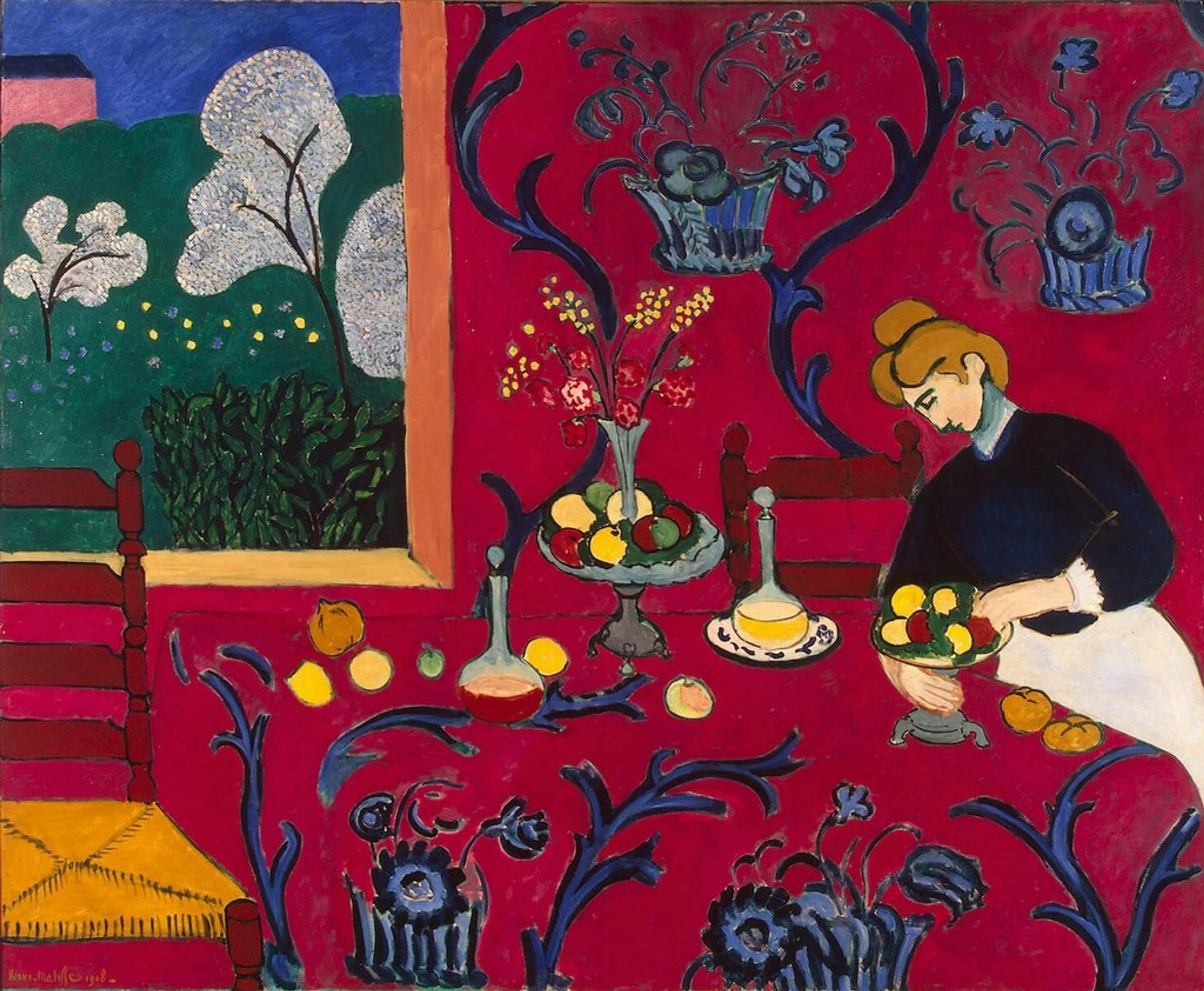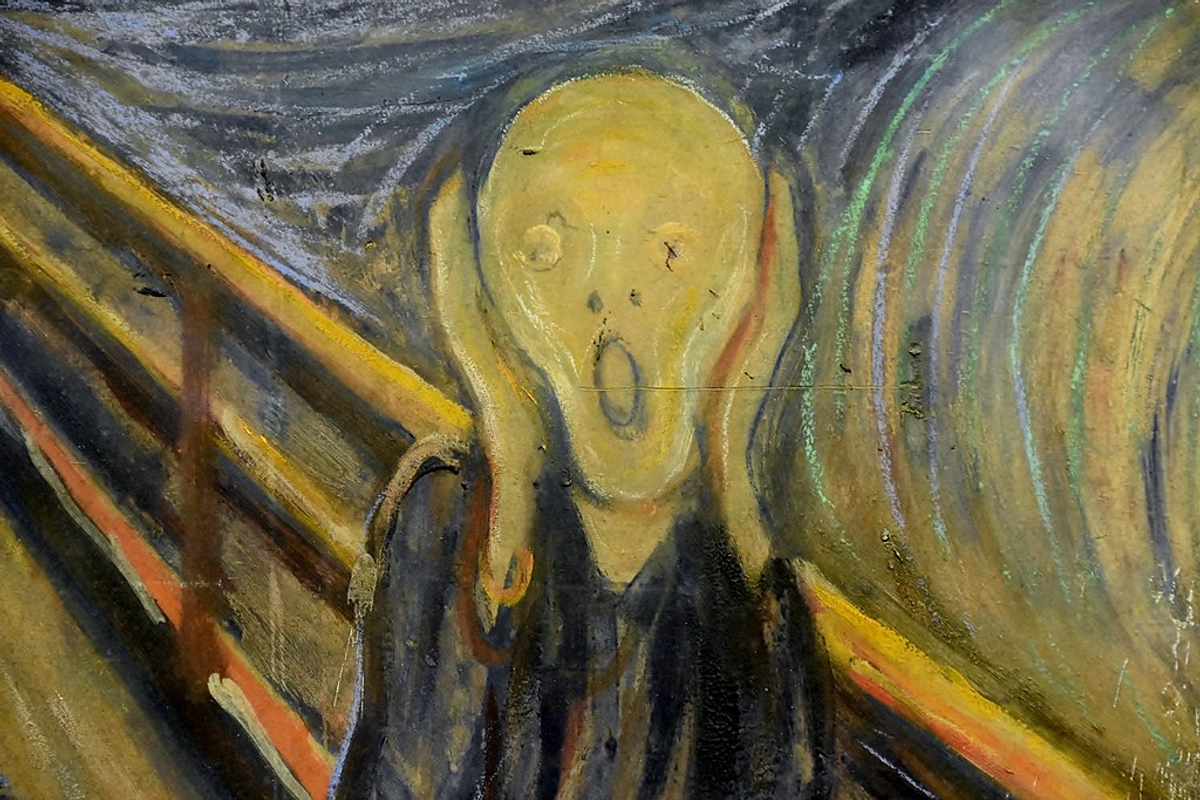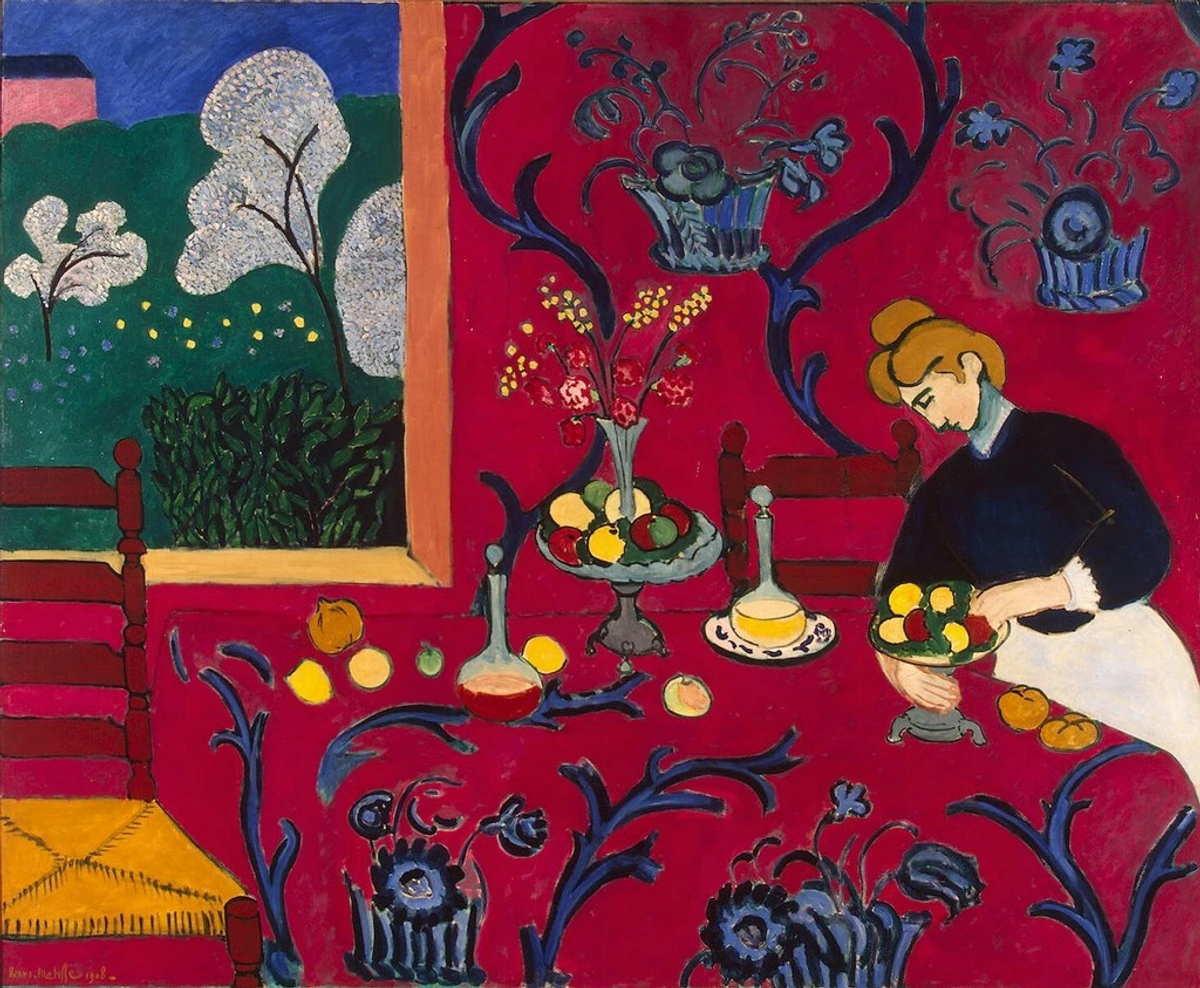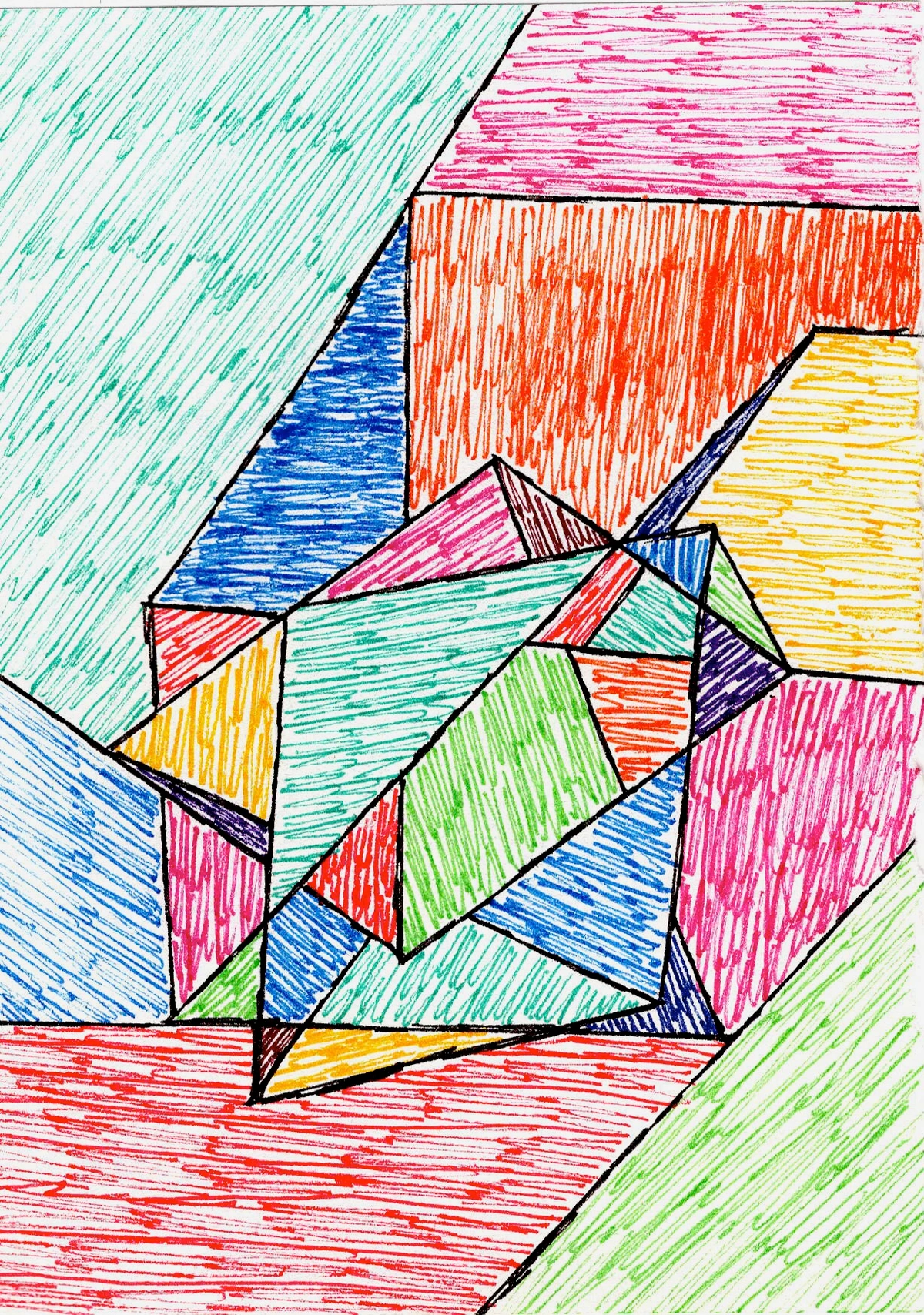
The Enduring Legacy of Symbolism: From Inner Worlds to Modern Art
Explore how Symbolism revolutionized art by focusing on inner experience, influencing modern movements like Expressionism and Fauvism, and shaping abstract art today.
The Enduring Legacy of Symbolism: From Inner Worlds to Modern Art
What if the most profound art doesn't just show us the world, but reveals the intricate world within us? It’s a question that has always gnawed at me, one I constantly grapple with in my own abstract pieces. I’ve always been fascinated by what happens inside us – the swirling emotions, the fleeting dreams, those inexplicable feelings that defy words. For a long time, art was mostly about what you could see, what was tangible, a mirror reflecting the external. But then, somewhere in the late 19th century, something shifted. Artists, perhaps growing tired of just painting pretty landscapes or depicting historical events as they appeared, started looking inward. And that, I believe, is where Symbolism quietly yet profoundly entered the stage, setting early modern art on a whole new course and directly influencing the emotional language I explore in my own work. This wasn't just a fleeting aesthetic; it was a profound philosophical shift, a radical validation of inner experience that would echo through countless movements to come. To understand this quiet revolution, we'll trace Symbolism's origins, delve into its key characteristics and artists, and uncover its enduring legacy, highlighting its profound influence on modern art and how its spirit continues to inspire artists like myself today. It's a journey into the soul of art itself.
What Exactly Was Symbolism? (And Why Does It Still Matter?)
Alright, let’s be honest. When you first hear "Symbolism," you might conjure images of cryptic puzzles or art that feels a bit… academic, maybe even dusty. But trust me, its emergence was nothing short of revolutionary. To truly grasp its impact, let's first define what Symbolism actually was.
Seeds of the Unseen: Precursors to Symbolism
Before Symbolism burst forth, its ground was subtly tilled by earlier movements, preparing artists to turn their gaze inward. Think of Romanticism with its fervent emphasis on individual emotion, the sublime in nature, and the dramatic narratives of the soul. Then came the Pre-Raphaelite Brotherhood in England, who, weary of academic conventions, turned to medieval mysticism and symbolic storytelling. They imbued their meticulously detailed works with allegorical meanings, believing art should elevate the spirit and communicate deeper truths, not just surface beauty. If you're intrigued by their unique approach, I've got a whole piece on the Symbolism of the Pre-Raphaelite Brotherhood: art, poetry, and social reform. Beyond visual arts, literary movements like Gothic literature with its fascination for the macabre, the sublime, and psychological depths, also fed into the Symbolist atmosphere, fostering an appreciation for mood, mystery, and the unseen forces that drive human experience. These movements nurtured the idea that art could be a conduit for something beyond mere observation, preparing the stage for Symbolism's full inward turn.
A Rebellion of the Soul: The Birth of Symbolism
Born in the late 19th century, Symbolism, as I see it, was a direct rebellion against the objective realism of Impressionism, the academic formality of Neo-Classicism, and the pervasive materialism of the industrial age. Europe was hurtling through rapid industrialization and urbanization, creating a new middle class accustomed to tangible progress and material wealth. Artists grew weary of merely portraying reality as it was; they felt it no longer sufficed to capture the anxieties of a fin-de-siècle Europe that was questioning everything, or to speak to a society increasingly preoccupied with the superficial. They hungered to tap into something deeper: the subconscious, the spiritual, the emotional truths that lay hidden beneath the surface of everyday life.
This was also a time when thinkers like Freud were beginning to explore the depths of the human psyche, providing a powerful intellectual foundation for artistic introspection. His nascent theories on the unconscious mind offered a scientific veneer to the subjective world Symbolists sought to explore. Philosophers such as Arthur Schopenhauer, with his ideas about a primal, unconscious 'Will' driving existence – a force beyond pure reason – provided a framework for depicting raw, instinctual drives in art. Friedrich Nietzsche, who championed subjective interpretation of reality over objective truth, further validated the Symbolists' inward turn and their embrace of individual vision. And it wasn't just philosophy; poets like Charles Baudelaire, Stéphane Mallarmé, Paul Verlaine, and Arthur Rimbaud, deeply involved in the broader Decadent movement, used language not to describe, but to suggest, to evoke states of mind and spirit, creating a rich interdisciplinary dialogue that shaped the visual arts. These intellectual and literary currents didn't just inspire Symbolist artists; they gave them permission to paint the very fabric of dreams and emotions.
Painting the Unseen: Key Artists and Techniques
Imagine trying to paint a feeling, not an object. That’s Symbolism. It championed the idea that art should evoke, suggest, and hint at meaning, rather than explicitly state it. Think allegories, myths, dreams, and intensely personal visions. Art became a window into the soul, a realm where colors and forms weren't merely decorative; they were carriers of profound meaning, charged with emotion.
Visionaries like Gustave Moreau, who explored ancient myths through a psychological lens, gave us pieces like Salome Dancing Before Herod, twisting ancient myth with psychological drama.
Odilon Redon delved into monstrous dreamscapes and ambiguous figures, creating works like The Cyclops, where a monstrous yet gentle figure emerges from pure imagination.
Arnold Böcklin created eerie, evocative landscapes that felt like personal visions rather than real places, perhaps best exemplified by his hauntingly serene and deeply evocative Isle of the Dead.
There was also Fernand Khnopff, whose enigmatic portraits like I Lock My Door Upon Myself perfectly captured a sense of melancholic introspection and isolated beauty. His work often feels like a secret whispered, rather than a story told.
Even Paul Gauguin, while later developing his own Synthetist style, often infused his work with Symbolist leanings, particularly his use of color and flattened forms to express spiritual and emotional truths rather than merely depicting reality. His famous phrase, "Art is an abstraction; derive it from nature by dreaming in front of nature, and pay more attention to creation than to the result," perfectly encapsulates this Symbolist-informed approach to subjective expression. If you want to dive deeper into the movement itself, I've got a whole piece on the Symbolism movement: mystical, poetic art that you might enjoy, and another on understanding symbolism in art.
Symbolist artists often employed specific techniques to achieve their evocative effects. You'll often see sfumato, a soft, hazy blurring of lines, or dramatic chiaroscuro, the interplay of light and shadow. These weren't just stylistic choices; they were deliberate tools to obscure clarity, enhance mystery, and mimic the indistinctness of dreams and memory, thereby compelling the viewer to feel rather than just see. Their palettes moved away from naturalism, using colors expressively to convey emotion or spiritual states, rather than just describing objects. Forms could be stylized or distorted, not out of clumsiness, but to emphasize inner truth over outer appearance. They deliberately used ambiguity, inviting the viewer to look beyond the surface and ponder deeper, often spiritual or psychological meanings, sometimes through complex allegories. They even explored the idea of synesthesia – linking senses, like a color evoking a sound – to create an immersive, multi-sensory experience of the inner world. This was about making the unseen palpable, the ineffable felt. As an abstract artist, this dedication to conveying the interior experience through visual language is something I constantly strive for in my own work; it’s about feeling a piece, not just seeing it.
Symbolism's Fertile Ground: How It Cultivated Modern Art
So, how did this profound inward turn affect what came next? Well, Symbolism was undeniably the fertile ground where many early modern art movements took root. It wasn’t just a stylistic choice; it legitimized the radical idea that an artist’s inner experience – their intuition, their emotions, their deepest thoughts – was a valid, even primary, subject for art. This might sound so natural to us now, doesn't it? But back then, it was a seismic shift, a true paradigm revolution. Before this, art often served external masters: the church, the state, or wealthy patrons with specific religious, didactic, or political agendas. Symbolism helped liberate art from these external obligations, championing its inherent value and subjective power. This liberation is encapsulated in the concept of l'art pour l'art (art for art's sake), asserting art's autonomy from moral, religious, or didactic purposes, valuing its aesthetic and emotional power above all else. This idea is a cornerstone of my own artistic philosophy, where the emotional truth of a piece often outweighs any literal representation.
It’s a subtle shift, but an incredibly profound one. Instead of artists primarily asking, "What does this look like?" they began asking, "What does this feel like?" This focus on subjective experience, intuition, and the expressive power of artistic elements was a direct inheritance from Symbolism. This emphasis on internal states truly paved the way for a more personal, emotive art, which, honestly, is what I strive to capture in my own abstract pieces that you can find here.
How could art ever go back to merely depicting the surface after being invited to explore the soul's depths?
Echoes in Post-Impressionism: Van Gogh and Gauguin's Inner Turmoil
Take someone like Vincent van Gogh. While not a strict Symbolist in the academic sense – his deep connection to the natural world often anchored his spiritual search in tangible reality – his work absolutely vibrated with Symbolist ideas. His swirling, impasto brushstrokes, his intensely personal and often non-naturalistic use of color – these weren't about accurately depicting reality. They were tools for conveying his emotional state, his spiritual yearning, his unique way of seeing and feeling the world. That iconic "Starry Night," for instance? It’s less about a specific village at night and more about a soul grappling with the immensity of the universe. It’s a feeling made visible, a Symbolist-inspired vision, and this deep dive into subjective experience directly stemmed from the paths Symbolism opened.
![]() https://www.rawpixel.com/image/537438, licence
https://www.rawpixel.com/image/537438, licence
As mentioned earlier, Paul Gauguin also stands as a crucial bridge. His deliberate use of flattened forms and vibrant, non-naturalistic colors was directly aimed at expressing inner emotional and spiritual states, particularly in his Tahitian scenes. This echoes the Symbolist ideal of using art to translate unseen internal realities. Symbolism truly paved the way for the conversations we now have about the emotional language of color in abstract art and the psychology of color in abstract art: beyond basic hues. Van Gogh and Gauguin internalized these principles without necessarily joining the formal movement, making the link undeniable.
The Scream and Beyond: Birthing Expressionism
Perhaps the most direct and fervent descendant of Symbolism is Expressionism. If Symbolism whispered about inner worlds, Expressionism, fueled by the anxieties of the early 20th century and rapid industrialization, often screamed it from the rooftops. Artists like Edvard Munch, whose "The Scream" is almost painfully iconic, took Symbolist introspection and amplified it. Munch wasn't painting a literal scream; he was painting the universal feeling of existential dread, of alienation, a powerful visual metaphor for the modern human condition. This kind of raw, unfiltered emotion, often conveyed through distorted forms and jarring colors, is pure Symbolist legacy, pushed to its emotional and visual extreme. It's that visceral truth that I, as an abstract artist, often seek to tap into in my own work.
 https://commons.wikimedia.org/wiki/File:Edvard_Munch,_The_Scream_1893_National_Gallery_Oslo_(1)_(35658212823).jpg, licence
https://commons.wikimedia.org/wiki/File:Edvard_Munch,_The_Scream_1893_National_Gallery_Oslo_(1)_(35658212823).jpg, licence
If you're curious about this powerful movement, I've put together an ultimate guide to Expressionism that delves much deeper into its origins and impact.
Wild Colors and Inner Worlds: Fauvism's Debt
Then there's Fauvism, a movement that burst onto the scene with its audacious, non-naturalistic use of color. Think Henri Matisse, painting portraits with green noses or landscapes with red trees. The artists, famously dubbed "Fauves" (meaning "wild beasts") by a critic shocked by their vivid hues, weren't trying to copy nature; they were using color as an expressive tool, a direct emotional force. While Symbolism provided the crucial philosophical precedent – the idea that color could convey subjective experience and meaning beyond mere representation, often with a melancholic or spiritual introspection – Fauvism leaned more into the immediate sensory experience and joyous, vibrant expression. It took Symbolism's permission to free color from mere description and ran wild with it, creating works that spoke directly to the artist's intense feeling of the world, rather than its objective appearance. It’s a freedom with color that, as an abstract artist, I find incredibly liberating, much like when I let loose with my own palette.
 https://live.staticflickr.com/4073/4811188791_e528d37dae_b.jpg, licence
https://live.staticflickr.com/4073/4811188791_e528d37dae_b.jpg, licence
It’s fascinating to see how artists use color in such radically different ways, and Fauvism is a prime example of taking that Symbolist idea of color-as-emotion and amplifying it with bold conviction. If you're intrigued by their vibrant rebellion, I've got an ultimate guide to Fauvism that delves deeper. My own path as an artist, documented in my timeline, definitely shows a continuous exploration of color's emotional impact, much in the spirit of these early innovators.
The Persistent Echo: Symbolism's Lingering Legacy
The influence of Symbolism didn't stop with these early modern movements; its deep resonance continued to ripple throughout the entire 20th century, profoundly shaping our understanding of what art could be.
Dreams, Psychology, and Beyond
The idea that art could explore dreams, the subconscious, and non-representational meaning directly paved the way for movements like Surrealism. Surrealist artists like André Breton, fascinated by Freud's theories, explicitly mined the dream world and automatic drawing techniques to unlock unconscious thoughts – a direct continuation of Symbolist aspirations for tapping into deeper psychological truths. Beyond painting and sculpture, Symbolist ideals also subtly influenced decorative arts and design, emphasizing evocative forms and rich, meaningful ornamentation over strict utility, as seen vividly in Art Nouveau. Here, organic, sinuous lines and symbolic motifs, often drawn from nature or myth, imbued everyday objects and architecture with a sense of wonder and deeper meaning, a direct inheritance from Symbolism's spiritual leanings. Its reach wasn't confined to France either; Symbolist poetry itself (Baudelaire, Mallarmé) continued to inspire new generations, and vibrant Symbolist movements emerged in countries like Belgium (think James Ensor's unsettling masks and satirical social commentary), Norway (with Edvard Munch's psychological dramas), and Russia (with artists like Mikhail Vrubel and Viktor Vasnetsov, who blended national folklore with spiritual themes), showcasing its broad European and even broader cultural appeal. It even inspired composers like Richard Wagner with his concept of the Gesamtkunstwerk – a total work of art synthesizing music, drama, and visual arts to create a unified, evocative experience.
Symbolism in Abstract Art
And even into contemporary abstract art, where meaning is often found in non-representational works, that Symbolist spirit of conveying the ineffable persists. Today, when I stand in front of an abstract painting – even my own – I often feel that powerful connection to the Symbolist spirit. It's about feeling, about intuition, about the artist communicating something deeply personal without needing to tell a literal story. It’s all about the unseen world of dreams and the subconscious inspiring abstract art, a conversation that Symbolism courageously started over a century ago. Its legacy is a profound validation that the internal landscape is as real, as valid, and as rich a subject for art as any external scene. This connection to inner worlds is what drives much of my work, exploring the emotional resonance of my abstract art: how feelings guide my brushstrokes and shaping my personal philosophy and artistic vision.
 zenmuseum.com, licence
zenmuseum.com, licence
Finding My Own Symbols: A Personal Journey
For me, this historical journey isn’t just academic; it’s deeply personal and informs my daily practice. The insights of Symbolism – the validation of inner worlds, the expressive power of color and form – resonate profoundly with my own artistic explorations. As an artist based in Den Bosch (come visit my museum in Den Bosch!), I’m constantly trying to express my own inner landscape, my feelings, my perspective on the world, often through the vibrant language of color and form. The Symbolists really opened the door to that kind of artistic honesty. They showed that you don’t need to paint a specific tree to talk about nature; you can use swirling lines and intense hues to evoke its spirit, its raw energy, its hidden life – perhaps the very feeling of a forest in a storm, rather than its precise visual record.
I remember one particularly challenging piece where I was trying to capture the feeling of simultaneous peace and turmoil – a swirling vortex of deep blues and fiery oranges that didn't depict specific objects but rather the sensation of struggle and eventual calm. Traditional methods felt inadequate. But by leaning into Symbolist principles – trusting intuition over strict representation, allowing internal truths to guide the brush – I found a way to translate that ineffable inner experience into something visually resonant. It meant accepting the ambiguity that comes with exploring the unseen, and believing that a viewer could feel what I felt, without me needing to draw them a map. So, next time you look at a piece of early modern art that feels a bit… different, a bit more intense, a bit more you in its emotional punch, remember that quiet whisper that started it all: Symbolism. It dared to look inside, validating the subjective experience, and art was never the same.
FAQ: Unpacking Symbolism's Enduring Influence
To solidify our understanding and delve deeper into Symbolism's enduring impact, let's address some common questions I hear:
- Q: What was the main difference between Symbolism and Realism?
- A: Realism aimed to depict the external world as objectively and accurately as possible, focusing on observable facts. Symbolism, conversely, sought to express inner, subjective realities – emotions, dreams, spiritual truths, and the subconscious – often through metaphors, allegories, and evocative suggestion, rather than direct, literal representation. If Realism gave you a photograph, Symbolism gave you a profound dream. One focused on what is seen, the other on what is felt and imagined.
- Q: How can I visually identify Symbolist art?
- A: Symbolist art often features mysterious, dreamlike, or fantastical imagery. You might see mythological or biblical figures reinterpreted, often with an eerie or unsettling quality. Colors are frequently used for emotional impact rather than naturalism, and forms can be stylized or distorted to emphasize inner meaning over outer appearance. There's usually a sense of ambiguity, inviting the viewer to look beyond the surface and ponder deeper, often spiritual or psychological meanings, sometimes through complex allegories. Common motifs include femme fatales, sphinxes, isolated figures, and desolate landscapes. If it makes you feel a bit like you've stumbled into a dream you can't quite shake, or you're trying to decipher a secret language, you might be on the right track!
- Q: How was Symbolism received by critics and the public at the time?
- A: Symbolism often faced skepticism, confusion, or even outright ridicule from a public accustomed to more straightforward, representational art. Its embrace of the subjective, the ambiguous, and sometimes the morbid or decadent was seen by many as obscure or indulgent. Critics were divided; some lauded its intellectual depth and spiritual ambition, while others dismissed it as elitist, esoteric, or simply too weird for its own good. For instance, some found Gustave Moreau's opulent, psychologically charged mythological scenes overwrought, while Odilon Redon's 'noirs' were seen as purely grotesque by those unwilling to engage with the subconscious. It certainly wasn't a crowd-pleaser for everyone back then, proving that truly revolutionary art often takes time to be understood. Can you imagine trying to explain Redon's Cyclops to someone who only wanted to see pretty cows in a field? Sounds like fun, actually.
- Q: Did Symbolism directly lead to Expressionism?
- A: While not a one-to-one, linear lineage, Symbolism heavily influenced Expressionism. Symbolist artists legitimized the use of art to convey intense personal emotion and inner states. Expressionists took these ideas and amplified them significantly, often with even more distortion, vibrant, non-naturalistic colors, and a raw intensity, making the inner turmoil dramatically visible and explicit. Think of it as Symbolism whispering, and Expressionism shouting!
- Q: Is modern abstract art still influenced by Symbolist ideas?
- A: Absolutely! The Symbolist emphasis on art as an expression of the subconscious, an evoker of emotion, and a vehicle for spiritual or metaphysical ideas resonates strongly in much of abstract art today. Many abstract artists, myself included, aim to communicate feelings, moods, or concepts that go beyond literal representation, directly echoing Symbolist principles of conveying the unseen through form and color. That quiet whisper still guides many of us.
- Q: What were some criticisms or limitations of Symbolism?
- A: Symbolism was often criticized for its perceived elitism and inaccessibility, catering to a sophisticated audience fluent in its complex allegories and references. Some found its themes of decadence, morbidity (e.g., obsession with death, disease), and the occult unsettling or overly pessimistic. Its lack of a unified stylistic approach also made it difficult for some critics to categorize, leading to accusations of being too amorphous or self-indulgent. Its intense focus on the individual, while liberating, sometimes led to obscurity or personal symbolism that was challenging for the wider public to decode. Despite these criticisms, its groundbreaking exploration of the subjective profoundly changed art's trajectory.
- Q: Was Symbolism confined to France, or did it spread internationally?
- A: Far from it! While often associated with French artists, Symbolism was a truly international movement, with vibrant manifestations across Europe. Notable centers included Belgium (with artists like James Ensor and Fernand Khnopff), Norway (Edvard Munch), Russia (Mikhail Vrubel, Viktor Vasnetsov), and Germany/Austria (influencing movements like the Vienna Secession). These international iterations often blended core Symbolist ideals with local folklore, myths, and artistic traditions, creating a rich tapestry of inner-world exploration.
A Final Whisper: Symbolism's Enduring Symphony
It's a beautiful, humbling thing, isn't it? How a movement born out of a desire for deeper meaning – for something beyond the superficial – can leave such an indelible, lasting imprint on the artistic landscape. Symbolism profoundly reminded artists – and continues to remind us – that the most profound truths aren't always found on the surface. Sometimes, you just need to close your eyes, listen closely to the whispers from within, and trust that those internal voices are just as real, just as valid, as anything you can physically see or touch. This daring to look inward, to trust the subjective experience, fundamentally altered the course of art forever. And sometimes, with enough courage and introspection, those whispers can indeed become a magnificent, enduring symphony in paint – a symphony that still plays loudly in the abstract expressions of today.
I encourage you to explore more art from this fascinating period, and perhaps even ponder the inner worlds that inspire your own interpretations. What secrets does art reveal within you? Feel free to share your thoughts, or even better, come visit my museum in Den Bosch and experience the resonance of inner worlds made visible.




